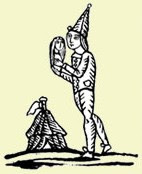
Several people had told me about this book, including one colleague who loves it and practically knows whole sections by heart, so when a friend offered to lend it to me, I took them up on the offer.
It is a highly poetic and rhythmical book, where the language takes centre stage. The patterns of the text and attention to detailed description appealed to my snapshot imagination, which is probably why I love photography and Haiku poetry. I liked the slow unfolding of the story which alludes to something catastrophic happening later on.
However, I did not connect to anyone in it enough. I didn't not care, but I wanted it to wring me dry when it finally unfolded (because I did like the characters) and it didn't. I found it sad, but there was only one small detail that caused a bit of a gulp, and that was in a strange place amongst a whole lot of angst that should have floored me as a reader. I've been floored for a lot less in other books. Perhaps I knew too much about it before I read it.
My overall impression though, which is what I will take away with me is the language, the repetitions, the playful details that construct a tangible, accessable world that so many other books fail to do. In this it is warm, rich and satisfying. The imagery that it constructs is what lingers, the heady, damp and pungent part of India, the small details, seen mainly through the eyes of two children, their anxieties and observations, and their memories as adults.
Bookbrowse have written a guide for readers groups:-
























